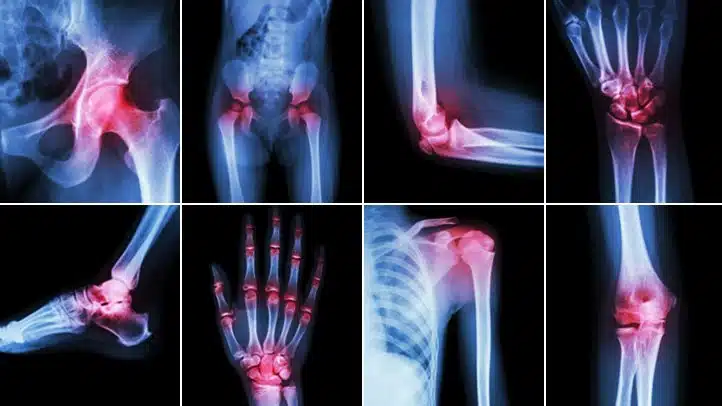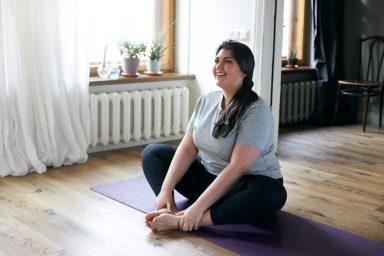- Home
- About Us
- Services
- Treatments
- Acid Reflux
- Allergic Rhinitis
- Alcoholic Fatty Liver
- Ankylosing Spondylitis
- Anxiety / Stress
- Arthritis
- Asthma
- Cervical Spondylitis
- Celiac Infection
- Colitis
- Constipation
- Dermatitis
- Detox Programme
- Diabetes (Madhumeha)
- Hair Fall
- Headache
- Hormonal Imbalance
- Hypertension
- Insomnia
- Irritable Bowel Syndrome
- Lungs Disease
- Migraine
- Neurological Disorder
- Non Alcoholic Fatty Liver
- Obesity Management
- Pain Management
- PCOD
- PCOS
- Sciatica Pain
- Sinusitis
- Skin Disorder
- Slip Disc
- Stress Management
- Thyroid
- Weight Management
- Techno-Ayurveda
- Media
- Blog
- Contact Us

Arthritis
Understanding Arthritis
Arthritis is a general term that refers to a group of over 100 diseases that cause inflammation and pain in the joints. The most common forms of arthritis are osteoarthritis (OA) and rheumatoid arthritis (RA), but other types include psoriatic arthritis, gout, juvenile arthritis, and ankylosing spondylitis, among others.
Arthritis can affect anyone, but it is most common among older adults. It can range from mild discomfort to debilitating pain, and it can significantly impact daily life and mobility. The condition is often chronic, though symptoms can vary in intensity.
In Ayurveda, arthritis is viewed not just as a physical condition but as a systemic imbalance in the body that affects both the joints and other tissues. Ayurveda approaches arthritis by focusing on balancing the doshas, removing toxins (ama), and restoring the natural flow of energy throughout the body.
Symptoms of Arthritis
1. Joint Pain
2. Difficulty Moving the Joint
3. Swelling in the Joints
4. Stiffness
Types of Arthritis in Ayurveda
Osteoarthritis
Osteoarthritis is a degenerative joint disease causing cartilage breakdown, leading to pain, stiffness, swelling, and reduced mobility in affected joints.
Rheumatoid Arthritis
Rheumatoid arthritis is an autoimmune disorder causing joint inflammation, pain, stiffness, and potential joint damage, affecting overall mobility and function.
Common Causes of Osteoarthritis

Injury or Overuse
Injury or overuse of joints can contribute to osteoarthritis by accelerating cartilage wear and tear. Repeated stress, improper movement, or previous joint injuries increase the risk of inflammation and damage, leading to pain, stiffness, and reduced joint function over time.

Obesity
Osteoarthritis can contribute to obesity by limiting physical activity due to joint pain and stiffness, reducing calorie burn. The resulting sedentary lifestyle, combined with potential metabolic changes, can lead to weight gain, creating a cycle that worsens both conditions.

Genetics
Genetics play a significant role in osteoarthritis, as a family history of the condition increases the risk. Specific genes related to cartilage production, joint inflammation, and collagen breakdown may predispose individuals to developing osteoarthritis, especially in weight-bearing joints.
Common Causes of Rheumatoid Arthritis

Genetics/Inherited Traits
Genetics and inherited traits play a significant role in osteoarthritis risk. A family history of the condition increases susceptibility, as certain gene variations can affect cartilage integrity, joint structure, and inflammation, contributing to the development and progression of osteoarthritis.

Smoking
Smoking can contribute to osteoarthritis by impairing blood flow, reducing oxygen supply to joints, and promoting inflammation. It accelerates cartilage degradation, hinders tissue repair, and increases the risk of joint pain and stiffness, worsening osteoarthritis symptoms over time.

Obesity
Obesity is a significant risk factor for osteoarthritis, as excess body weight increases joint stress, particularly in weight-bearing areas like the knees and hips. This added pressure accelerates cartilage breakdown, leading to inflammation, pain, and reduced joint function.
Panchakarma Ayurvedic Treatment for Arthritis
Arthritis, a condition characterized by inflammation and pain in the joints, is often associated with a variety of imbalances in the body, including vata, pitta, and kapha doshas, along with the accumulation of ama (toxins). Ayurveda, the traditional system of medicine, offers a holistic and natural approach to treating arthritis through the Panchakarma detoxification process. Panchakarma aims to remove toxins, balance the doshas, reduce inflammation, and rejuvenate the body, thereby improving the symptoms of arthritis and preventing further joint damage.
Additional Ayurvedic Therapies for Arthritis
Apart from Panchakarma, Ayurveda offers several other treatments to help manage arthritis:
Herbal Remedies:
- Turmeric: Known for its anti-inflammatory properties, turmeric can help reduce pain and swelling in the joints.
- Ashwagandha: An adaptogen that reduces stress and inflammation and strengthens the immune system.
- Guggulu: A powerful resin used to treat joint pain and inflammation.
- Boswellia (Indian Frankincense): Often used to reduce inflammation and improve joint health.
Dietary Modifications: A balanced, anti-inflammatory diet is crucial in managing arthritis. Ayurveda recommends a diet rich in warm, easily digestible foods like soups, stews, and cooked vegetables, while avoiding cold, greasy, and heavy foods that can aggravate the doshas.
Yoga and Physical Therapy: Specific yoga postures and stretching exercises can help increase joint mobility, reduce pain, and promote overall flexibility. Regular movement is vital to managing arthritis effectively.
FAQs of Arthritis
Arthritis is caused by joint inflammation due to aging (osteoarthritis), immune system dysfunction (rheumatoid arthritis), injury, or metabolic issues (gout).
Symptoms include joint pain, swelling, stiffness, reduced range of motion, and warmth or redness around the affected joints.
Arthritis is diagnosed through physical exams, blood tests, imaging (X-rays or MRIs), and sometimes joint fluid analysis.
